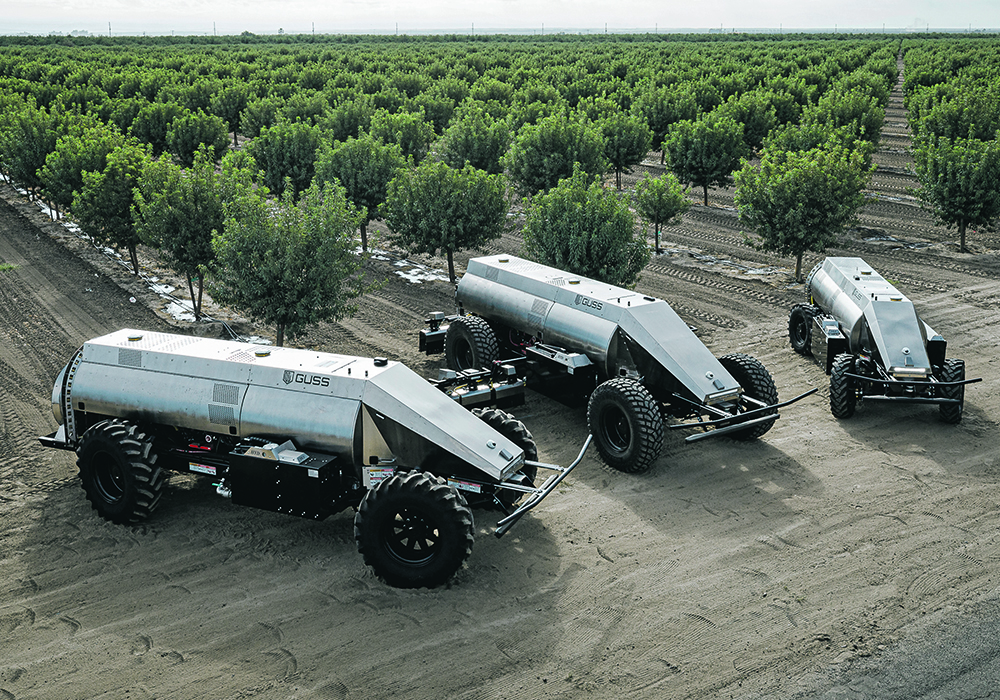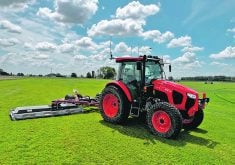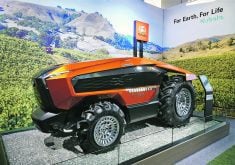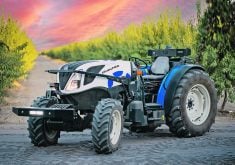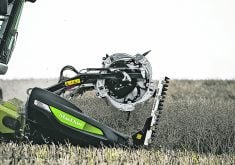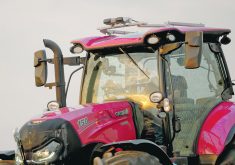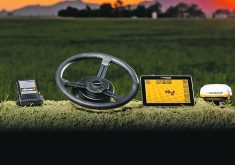The machine travels fruit tree rows on its own to manage weeds; it was designed to reduce how much herbicide is used
GUSS Automation expanded its lineup of autonomous orchard sprayers with the launch of the Herbicide GUSS.
Chase Schapansky, the company’s chief technology officer, said orchard spraying is an obvious use for automated equipment because it’s difficult to find people who want to do the work.
“It’s an undesirable job and not the safest job (because of exposure to chemicals). It’s a very slow process, and you need a lot of sprayers because you have to drive every single row, and you’re only covering 20-foot swaths at a time,” Schapansky said.
Read Also

Europe holds promise for Canadian lentils
Pulse Canada is trying to help boost lentil consumption in Europe, which is already the fourth largest market.
“There’s constantly more regulations, whether that was due to the materials that we’re spraying or just, you know, the PPE for the employee.”
The first autonomous sprayer offered by the company, called GUSS, was designed to spray fertilizers, fungicides and insecticides on almond, pistachio, walnut, citrus, and stone fruit trees.
Mini GUSS was designed for similar jobs, but it’s 25 percent smaller than GUSS.
The third offering in the lineup, Herbicide GUSS, is the same size as the original GUSS sprayer—23.5 feet long and 6.5 feet tall — but its width ranges from 8.3 to 19 feet depending on the boom extensions.
“Herbicide GUSS just has a 74 horsepower engine rather than 173 h.p., just because we don’t have the fan in the back. That fan takes up about 100 h.p. So, since we aren’t doing the air blast style sprayer, we need a lot lower horsepower,” Schapansky said.
The hydraulic-controlled, height-adjustable booms have tilt for varying berm sizes, and they also have breakaways to prevent damage to trees and crops.
Herbicide GUSS autonomously travels orchard rows to manage weeds, and it was designed to reduce the amount of chemical required for this task.
The system is capable of green on brown spraying, where it detects and treats any plant growing in the rows. This is enabled by nine sensors on the booms.
“We expect to see anywhere from probably 50 to 90 percent material reduction just because there are times where there’s very little weeds out there, but you still need to spray them,” Schapansky said.
The booms also have spray shrouds to prevent spray drift.
He said GUSS Automation’s customers asked for an autonomous herbicide application platform that could work in conjunction with the other GUSS sprayers.
One operator can operate multiple machines at the same time, largely because of the platform’s safety systems, which include lidar and object detection.
“There’s usually one operator for four machines. So, one guy is sitting in his pick-up truck. He has a cellular connection or a radio connection to the sprayers, and he also has a GPS location of his truck. So, the first thing he’s going to do is he has to map the field,” Schapansky said.
He said there are three steps to field mapping.
First, operators decide where they want the sprayer to turn around, and then they pull their GPS-equipped truck into the first and last row of the orchard. The row spacing is then inputted and the mapping software generates a path map.
In the second step, operators assign routes to the sprayers.
“So, if he has 100 rows and he has four sprayers that he’s running, then each sprayer is assigned 25 rows. So, he’s going to tell the first sprayer, ‘OK, you need to do row one through 25. The second sprayer is going to be row 26 through 50,’ ” Schapansky said.
“He has a lot of flexibility in how sets it up. Maybe he wants to run them as a pair. So, they’re going to do every other row.”
The third step is to configure the sprayers with the r.p.m. and spray rate they are to apply.
“GUSS is a completely custom, intentionally built sprayer. We’re not automating a tractor or an existing piece of equipment. GUSS was designed to be an autonomous sprayer,” Schapansky said.
“Everything’s controlled electronically, from the steering to engine r.p.m. All the control of the vehicles are designed for autonomy, so it gives us the perfect platform to automate, make changes, make software and make the product as best as it can be.”
Last April John Deere announced it formed a joint venture with GUSS Automation to help it collaborate with the Deere sales channel.


